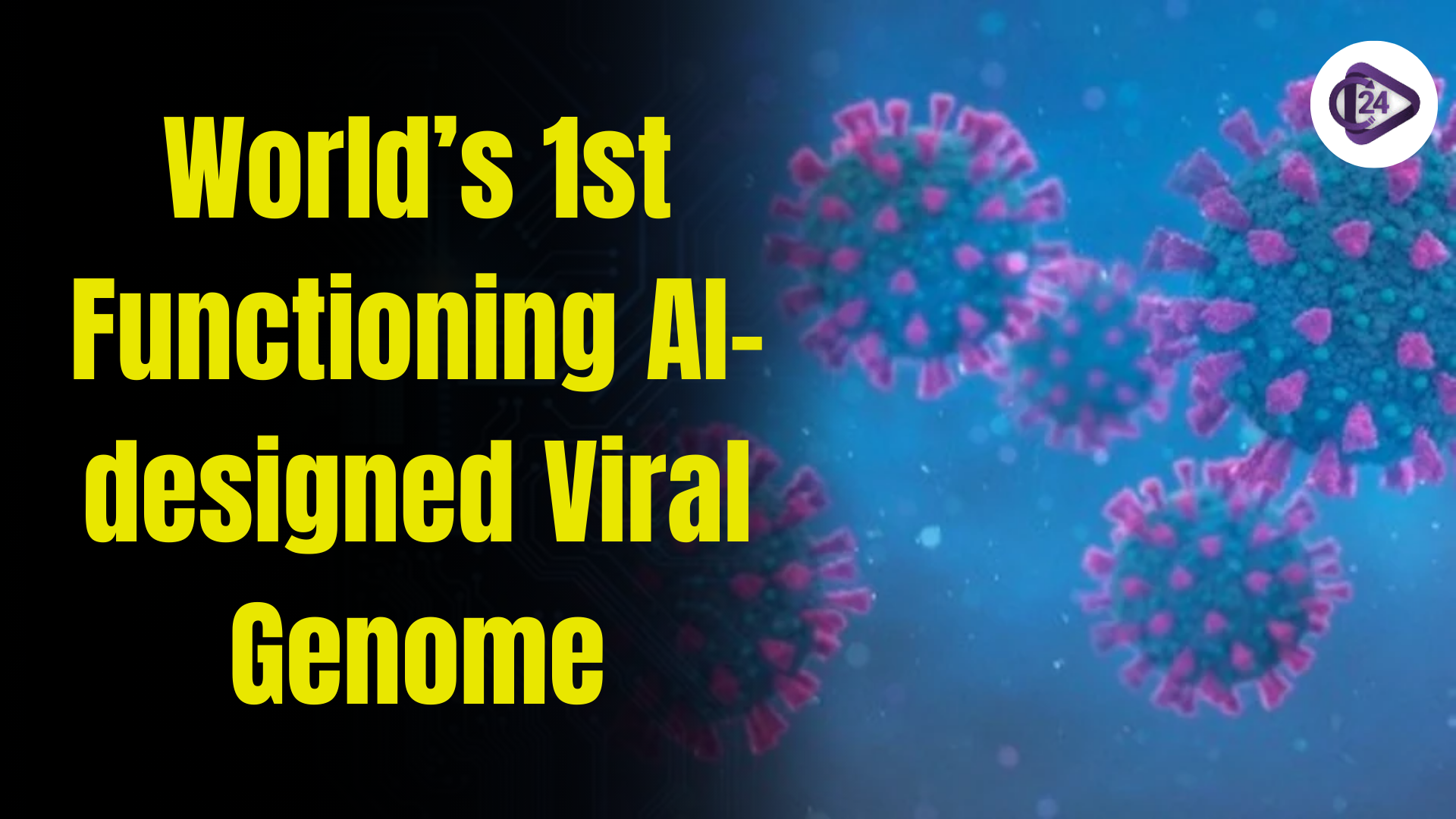
Recently, researchers at Stanford University and the Arc Institute have successfully created the world’s first entirely AI-generated genome, marking a major breakthrough in synthetic biology. This new development demonstrates the potential of Artificial Intelligence (AI) in advancing the field of genomics. The achievement not only proves AI’s capability to design functional genomes but also opens new possibilities in medical research, biotechnology, and the fight against antibiotic resistance. It signifies a turning point where AI-driven discoveries could accelerate innovations in healthcare and life sciences.
About the AI-Generated Genome:
The AI model designed a bacteriophage genome, a virus capable of infecting and killing bacteria. While scientists have previously used AI to design individual proteins and small multi-gene systems, creating an entire genome from scratch is far more complex.
In simpler terms, the AI model learned the “language rules” of phage DNA and generated a new, never-before-seen genome that was functional in real-life applications.
How Was It Done?
-
The researchers used an AI model called Evo, specifically a genome “language model,” to design entirely new bacteriophage genomes.
-
Evo was trained on two million viral genomes, learning patterns of gene order and DNA composition.
-
The researchers guided the model to mimic phiX174, a small bacteriophage with just 11 genes and around 5,000 DNA letters—a long-established subject in molecular biology.
What Is a Virus?
-
A virus is an infectious microbe made up of a segment of nucleic acid (either DNA or RNA) surrounded by a protein coat called a capsid.
-
Viruses are not considered living organisms because they cannot carry out metabolic processes independently.
-
A virus cannot replicate on its own and must infect host cells to make copies of itself, often damaging or killing the host cell in the process.
-
Examples of viruses that cause human diseases include AIDS, COVID-19, measles, and smallpox.
What Is a Genome?
-
A genome refers to the entire set of DNA instructions found within a cell.
-
In humans, the genome includes 23 pairs of chromosomes located in the nucleus and a small chromosome in the mitochondria.
-
The genome contains all the information necessary for an organism to develop, function, and reproduce.
Key Takeaways:
-
Unlike previous approaches that involved tweaking a few DNA letters, AI created an entire genome from scratch.
-
The DNA sequences created by AI were distinctly different from any natural bacteriophage but were still functional.
-
This breakthrough has significant potential for phage therapy, which uses viruses to combat antibiotic-resistant bacteria.
Significance:
-
This advancement goes beyond just sequencing or synthesizing existing genomes; it demonstrates that scientists can now design new, functional genomes using AI.
-
The ability to create diverse bacteriophages could greatly enhance phage therapy, making it more adaptable and effective in combating bacterial resistance.
As technology improves and costs decrease, there is potential to design more complex viral genomes, including phages targeting clinically significant pathogens.
Conclusion
The creation of the world’s first functioning AI-designed viral genome is a landmark achievement in biotechnology. It demonstrates how Artificial Intelligence can go beyond protein or gene-level design and generate entirely new, functional genomes. This development holds immense promise for phage therapy, especially in combating antibiotic-resistant bacteria. As AI models evolve, scientists may design even more complex viral genomes tailored for medical use. Ultimately, this breakthrough represents a significant step toward the future of synthetic biology and AI-driven healthcare innovations.



 OmanSat-1 Oman’s First National Communications Satellite Launched Successfully
OmanSat-1 Oman’s First National Communications Satellite Launched Successfully India’s First Commercial PSLV to Propel Oceansat into Orbit Early Next Year
India’s First Commercial PSLV to Propel Oceansat into Orbit Early Next Year India’s First MWh-Scale Vanadium Redox Flow Battery Inaugurated at NTPC NETRA
India’s First MWh-Scale Vanadium Redox Flow Battery Inaugurated at NTPC NETRA Maharashtra Becomes First Indian State to Collaborate with Elon Musk’s Starlink
Maharashtra Becomes First Indian State to Collaborate with Elon Musk’s Starlink ISRO’s Bahubali Rocket Successfully Launches India’s Heaviest Communication Satellite CMS-03
ISRO’s Bahubali Rocket Successfully Launches India’s Heaviest Communication Satellite CMS-03 IIT Madras Develops India’s First Hybrid-Rocket VTOL for Controlled Soft Landing
IIT Madras Develops India’s First Hybrid-Rocket VTOL for Controlled Soft Landing Google Quantum Technology: Revolutionizing Drug Discovery & Materials Design
Google Quantum Technology: Revolutionizing Drug Discovery & Materials Design India’s GalaxEye Set to Launch Pioneering Multi-Sensor EO Satellite in 2026
India’s GalaxEye Set to Launch Pioneering Multi-Sensor EO Satellite in 2026 AI-led Efficiencies Could Contribute to 8% GDP Growth Target: NITI Aayog
AI-led Efficiencies Could Contribute to 8% GDP Growth Target: NITI Aayog






